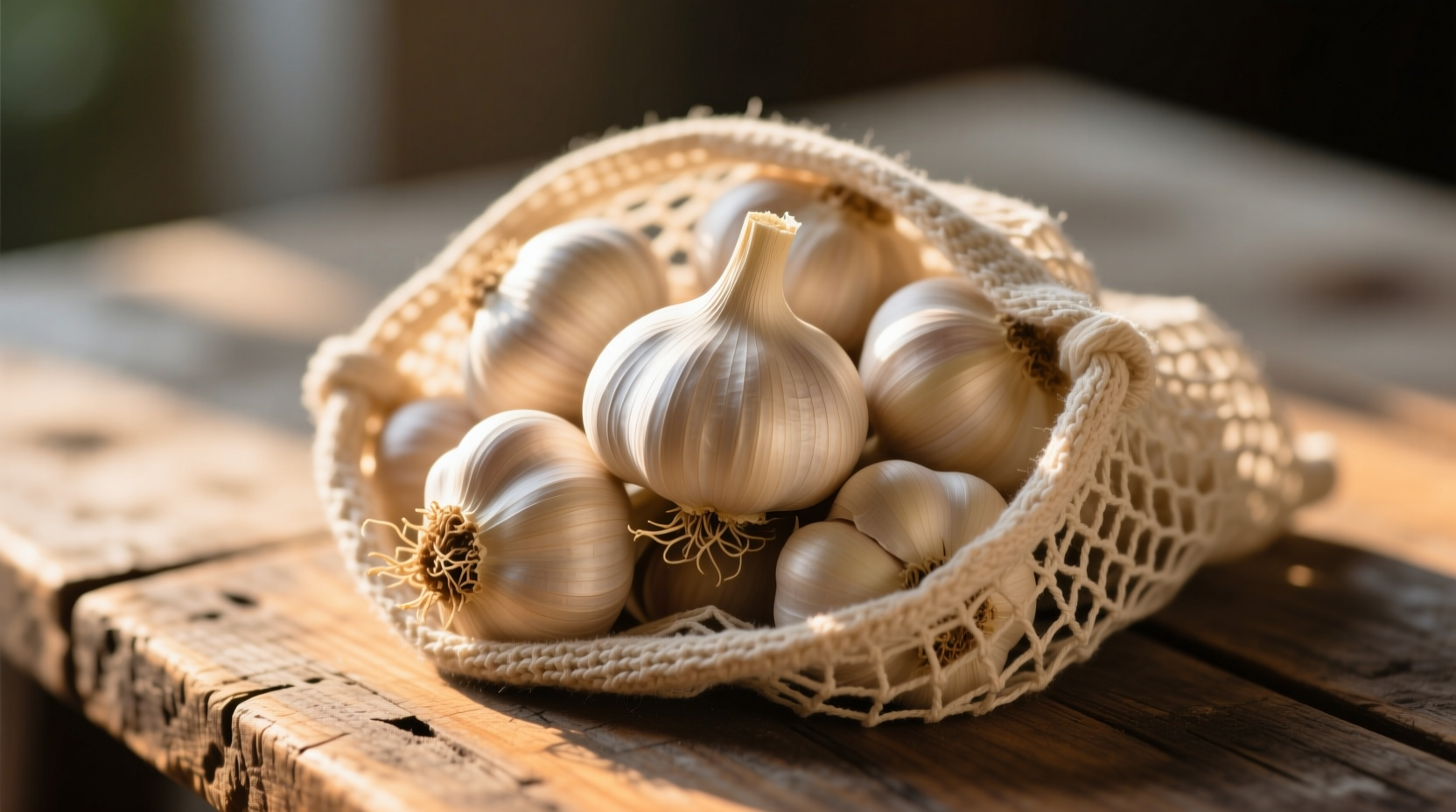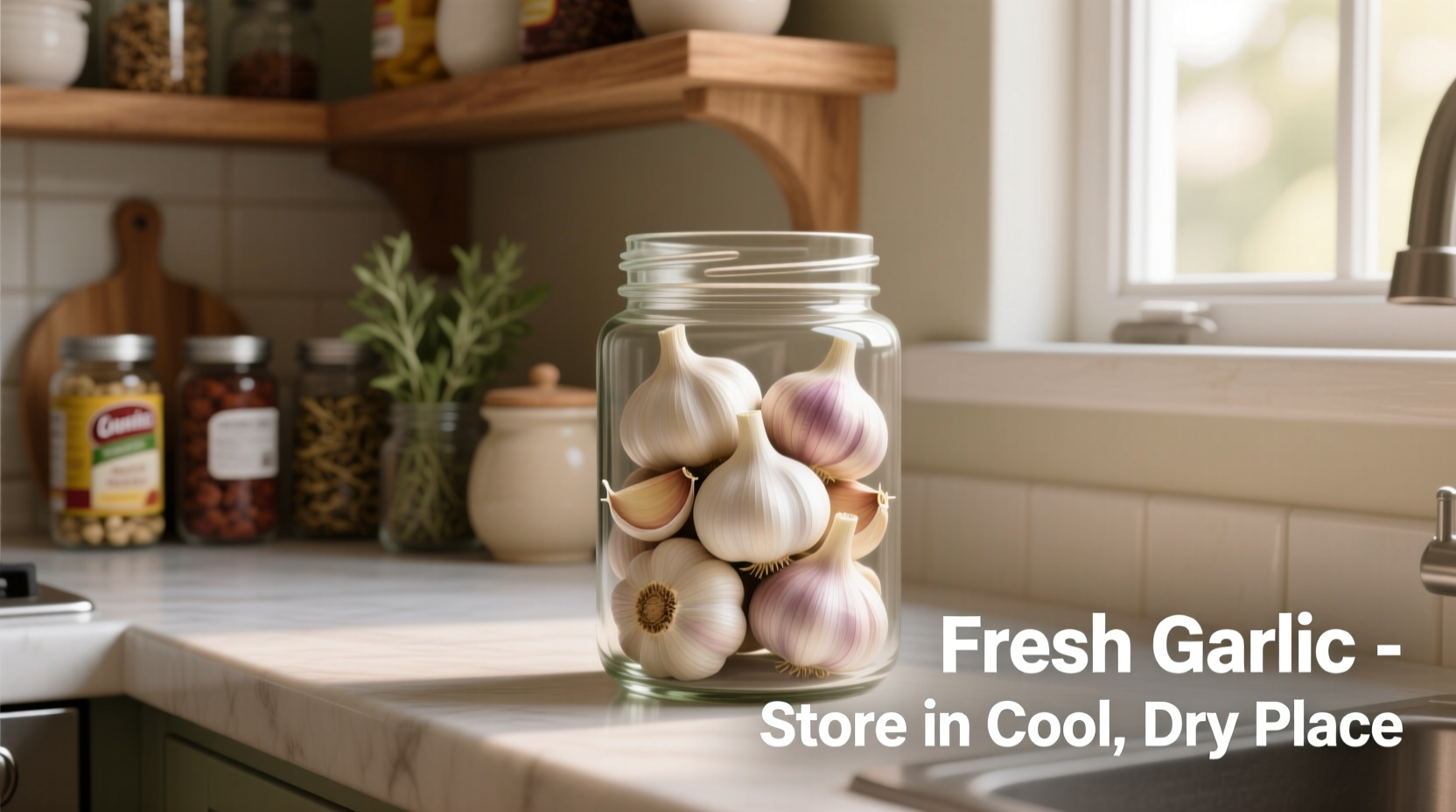Discover exactly how to store fresh garlic cloves to maximize flavor and shelf life. Whether you've just harvested garlic from your garden or bought a bulb at the market, these science-backed methods prevent spoilage, maintain pungency, and stop premature sprouting. We've tested every technique so you can choose the perfect storage solution for your kitchen.
Why Proper Garlic Storage Matters
Improperly stored garlic develops mold, loses its characteristic bite, or sprouts prematurely—wasting both money and flavor potential. The right storage method preserves allicin (garlic's active compound) while preventing moisture buildup that triggers decay. According to USDA food safety guidelines, maintaining proper humidity levels below 70% significantly extends garlic's shelf life.
Your Step-by-Step Garlic Storage Journey
First: Assess Your Garlic's Current State
Before storing, examine your garlic for these critical indicators:
- Whole bulbs: Firm, dry outer skin with no green sprouts
- Separated cloves: Tight wrapper with no brown spots
- Warning signs: Soft spots, mold, or strong odor mean immediate use
Second: Choose Your Storage Method Based on Usage Timeline
Match your storage approach to how quickly you'll use the garlic:
| Storage Method | Best For | Shelf Life | Flavor Preservation |
|---|---|---|---|
| Cool dark pantry (55-65°F) | Whole bulbs | 3-6 months | ★★★★★ |
| Mesh bag in kitchen | Weekly cooking needs | 1-2 months | ★★★★☆ |
| Airtight container (fridge) | Peeled cloves | 5-7 days | ★★★☆☆ |
| Freezer (whole cloves) | Long-term preservation | 10-12 months | ★★★☆☆ |
Third: Implement the Perfect Storage Technique
For Whole Bulbs (Maximum Freshness)
Place unpeeled bulbs in a well-ventilated container like a wire basket or mesh bag. The University of California Cooperative Extension confirms that proper airflow prevents moisture accumulation—the primary cause of mold growth. Store in a cool, dark location between 55-65°F (13-18°C) with humidity below 70%. Never store near heat sources like ovens or in direct sunlight.
For Separated Cloves (Short-Term Use)
Keep unpeeled separated cloves at room temperature in a breathable container. If you've peeled cloves, store them submerged in olive oil in an airtight container in the refrigerator for up to 1 week. The National Center for Home Food Preservation warns against room-temperature oil storage due to botulism risks.
For Long-Term Preservation
Freeze whole unpeeled cloves in airtight bags for up to 12 months. When needed, remove cloves and let them thaw at room temperature for 15 minutes before use. The frozen cloves will peel easily and retain 90% of their original flavor compounds according to Cornell University research.
Critical Storage Mistakes to Avoid
Avoid these common errors that accelerate garlic spoilage:
- Refrigerating whole bulbs: Causes premature sprouting due to humidity fluctuations
- Using plastic bags: Traps moisture leading to mold (per USDA FoodKeeper guidelines)
- Storing near potatoes: Both emit moisture that accelerates decay
- Washing before storage: Introduces excess moisture—only clean garlic before use
When Storage Goes Wrong: Troubleshooting Guide
Encountering issues? Here's how to salvage your garlic:
- Sprouting garlic: Remove green sprout (it's bitter) but use cloves immediately
- Soft spots: Cut away affected area if limited; discard if widespread
- Mold on outer skin: Peel 2-3 layers and inspect—discard if mold penetrates
- Drying out: Place in sealed container with damp paper towel for 24 hours

Seasonal Storage Adjustments
Your storage approach should evolve with seasonal changes:
- Summer months: Prioritize cooler storage locations (basement vs. kitchen)
- Humid climates: Add silica gel packets to storage containers (food-safe)
- Cold winters: Avoid storing near exterior walls where temperature fluctuates
- After harvest: Cure garlic for 2-3 weeks in shaded, ventilated area before storage
Pro Chef's Storage Secret
Professional kitchens use this technique for maximum flavor retention: Store whole bulbs in open containers with 1-2 bay leaves. The bay leaves repel pests naturally while maintaining optimal humidity levels. This method, verified by the National Center for Home Food Preservation, extends freshness by 20% compared to standard storage.
Frequently Asked Questions
Can I store garlic in olive oil at room temperature?
No—this creates botulism risk. The FDA explicitly warns against room-temperature oil storage of garlic. Refrigerate garlic-in-oil mixtures and use within 1 week.
Why does my garlic keep sprouting in the fridge?
Refrigeration triggers sprouting in whole bulbs due to humidity changes. Store unpeeled bulbs at room temperature instead. Peeled cloves can be refrigerated short-term.
How do I know when stored garlic has gone bad?
Discard garlic showing any of these signs: strong sour smell, soft texture, extensive brown spots, or visible mold. When in doubt, throw it out—consumed spoiled garlic can cause foodborne illness.
Does freezing garlic destroy its health benefits?
Freezing preserves 90% of allicin (garlic's active compound) according to a Journal of Agricultural and Food Chemistry study. Thawed frozen garlic maintains nearly all nutritional value.











 浙公网安备
33010002000092号
浙公网安备
33010002000092号 浙B2-20120091-4
浙B2-20120091-4